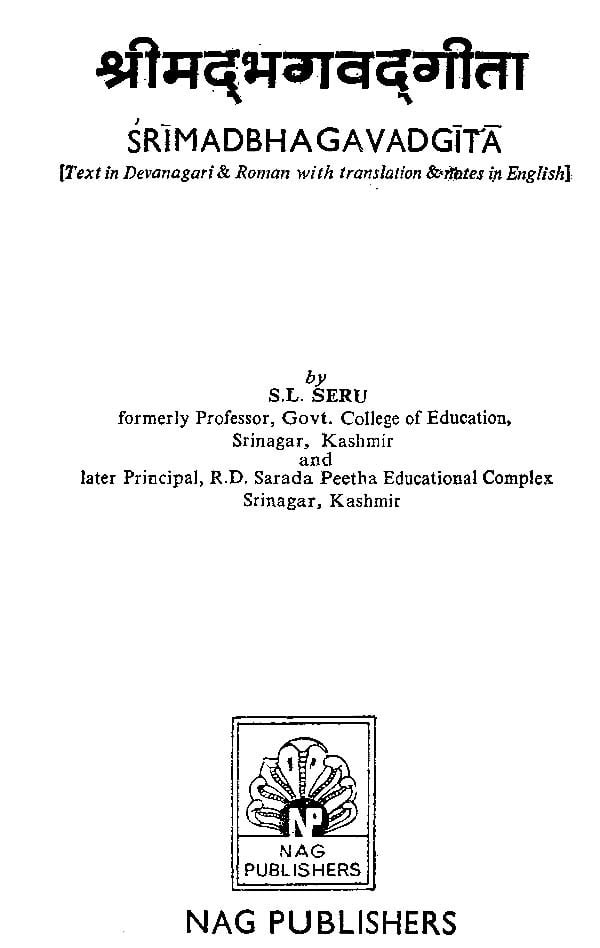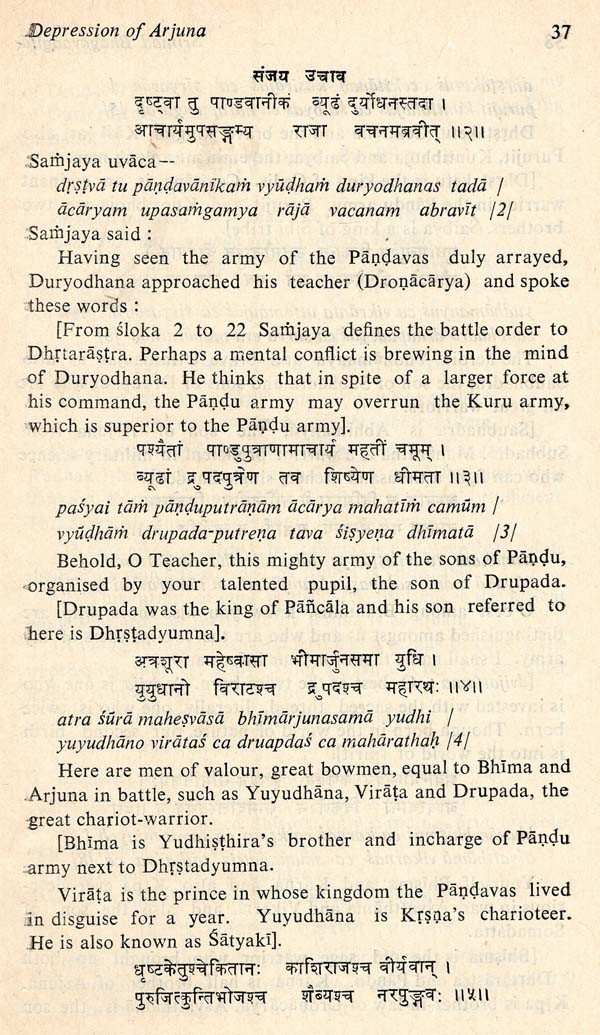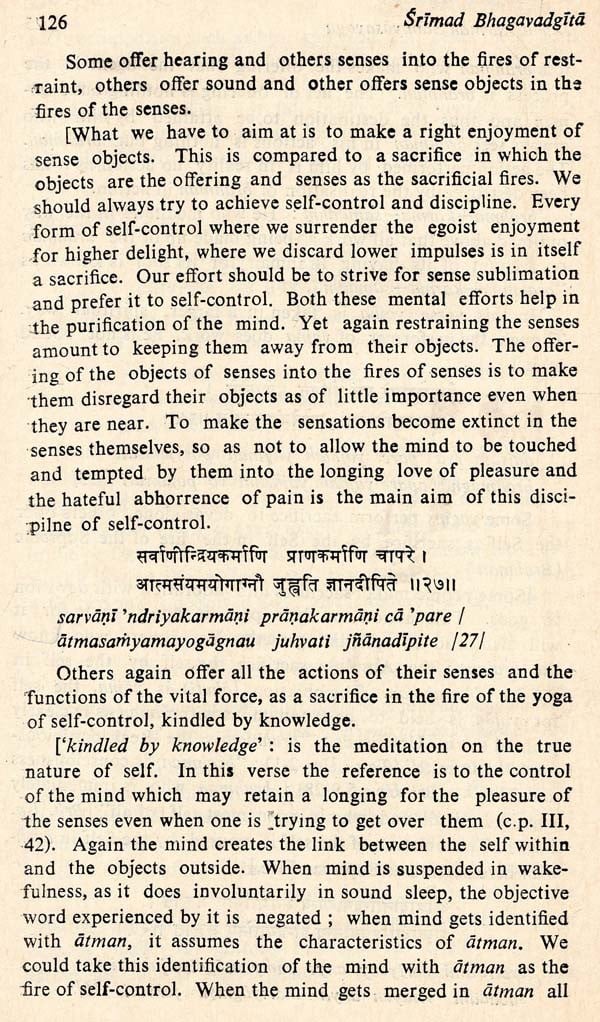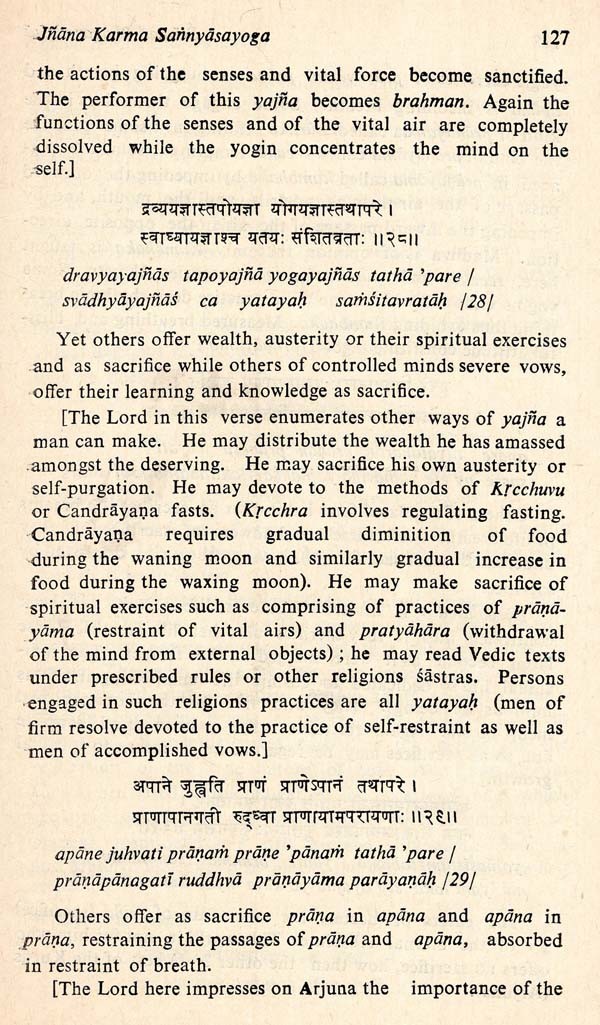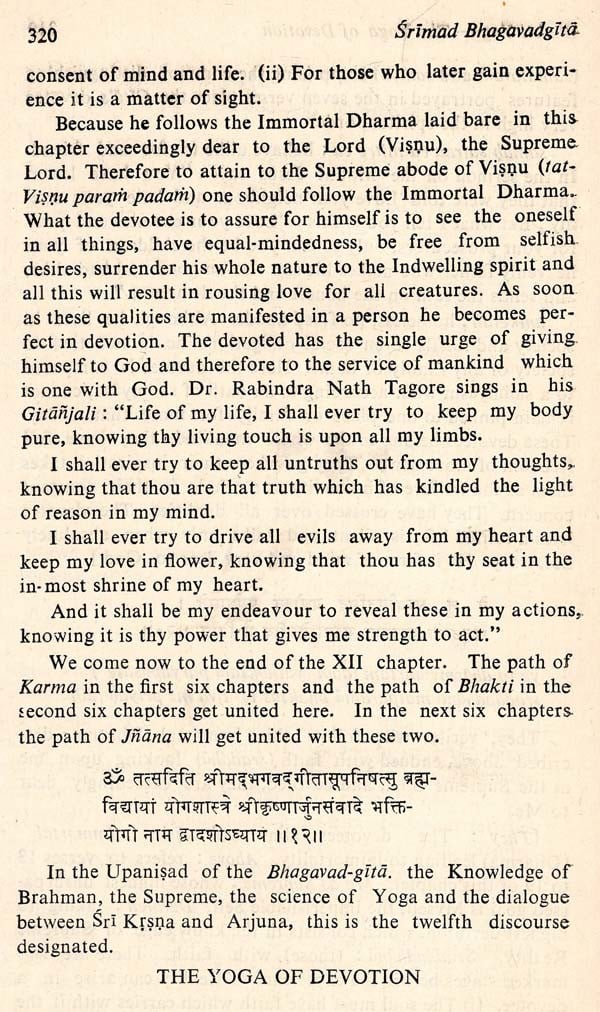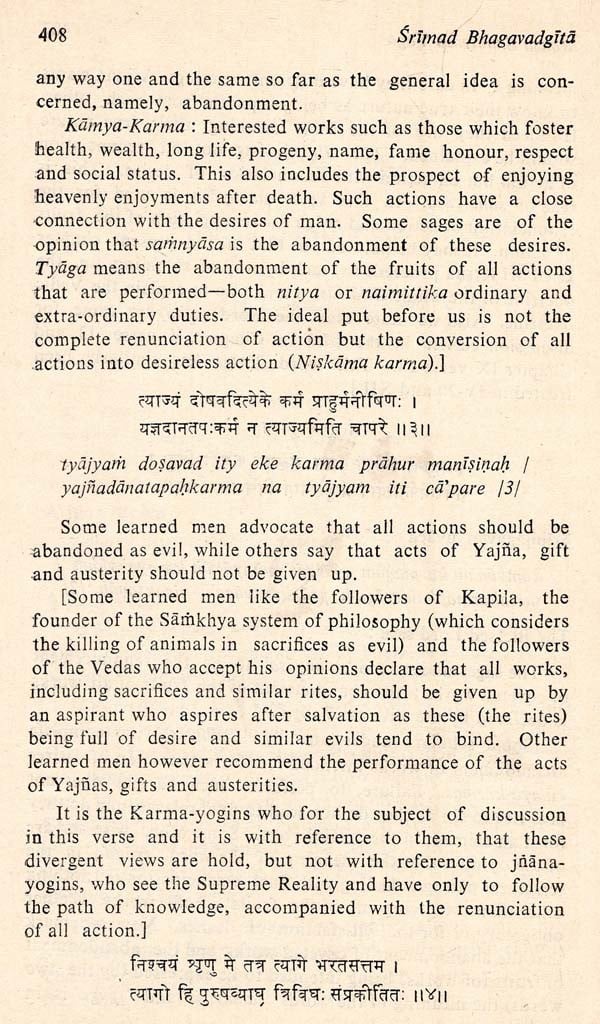About the Book Of all the Hindu scriptures, the Bhagavadgita is quite unique in its character. The theoretic principles of spiritual philosophy, and the doctrines of religio philosophic practices discussed in it, are so profound in nature, and so esoteric in character that even the greatest thinkers and highly adept saints cannot follow them exactly. The essence of the spiritual knowledge contained in it is so deep and so subtle that as understanding can grasp it. It can, however, be realized only by an adept practitioner through his own sharp philosophic insight developed by dint of regular practice in intuited revelation.
Prominent ancient Sanskrit commend tators on the Gită can be classified into three main groups viz.. Vaisnavite, Vadantic and Saivite. The first two of them have become sufficiently popular with Sanskritists throughout the length and breadth of the country, while the third penetrating into some deeper secrets of subtler principles of philosophy and esoteric doctrines of Sadhana has remained more or less confined to certain coteries of master only. Not a few works of prominent commentators of the present age have also become sufficiently popular with lay readers. Most of such works have been written either in Hindi or in English. The present commentary on the Divine song, written by Prof. S.L. Seru contains the essence of the most important commentaries on it. It is mainly based on the views of the Vedäntic and Vaisnative commentators. Besides it presents a synthesis of the views of those ancient and modern thinkers. The work is, thus, highly illuminating character and would be of sufficient use to such readers as do not have a discute approach to the Sanskrit works of great thinkers like Shankara, Ramanuja etc. Introduction is very scholarly in character.
About the Author The author first served as Professor in the Govt. College of Education, Srinagar, and Kashmir, where he significantly contributed to make education both meaning full and positive. His services were lent for some years, to Ministry of Education, Government of India as Coordinator to implement the programmers of Secondary Education sponsored by the Directorate of Educational Programmes in Secondary Education under the auspices of Union Ministry of Education New Delhi. In this capacity he carried the modern techniques of Education to all the schools in the Kashmir valley. tar the author worked as Principal of an Educational complex know as the Rapa Devi Särda Peetha situated in the heart of the city. The author also wrote the book entitled 'Growth and develop ment of Education in the Jammu and Kashmir' covering a period of 100 years of educational activities in the state.
Foreword of all Hindu scriptures, the Bhagavadgita is quite unique in its character. The theoretic principles of spiritual philosophy and the doctrines of religio-philosophic practice, discussed in it, are so profound in nature and so esoteric in character that even the greatest thinkers and highly adept saints cannot follow them exactly. The essence of the spiritual knowledge contained in it is so deep and so subtle that no understanding can perfectly understand it, no mind can exactly think of it, no speech can correctly express it and no writing can clearly explain it. It can, however, be realized only by an adept practitioner through his own sharp philosophic insight developed by means of regular practice in inspire revelation. Only such a perfect being (a siddha) can inspire an adept disciple.
But, in spite of such profundity of the philosophy of the Gait, its presentation is so simple that people of all intellectual levels find interest and solace in it. Besides, the language of the Bhagavad-Gita is so easy and its style is so lucid that writers of all degrees are attracted to it, and consequently, a huge number of commentaries has grown round it, and is still growing on though the Gait is itself sweeter than all of them.
Just as all pictures of the Mount Everest, taken from different angles at different places in its gradual ascent, are partly correct, so are most of the views of commentators of the Bhagavadgita correct upto certain levels of the gradually superior revelation of the Truth.
Preface Lord Krsna has declared to Arjuna that "He who does work for Me; he who looks upon Me as his goal; he who worships Me: is free from attachment; he who is free from enmity to all creatures; he goes to Me, O Pandava". Again, while winding up the supreme teaching and the ultimate mystery at the close of chapter IX. He repeats: "On Me fix thy mind; to Me be devoted; worship Me, revere Me; thus having disciplined thyself, with Me as thy goal, to Me salt thou come".
It is in response to this categorical decree, pronounced by the Lord, that this book has been written, as a token of love and worship, having trustfully surrendered to Him all my thoughts, worship, sacrifice and reverence. His grace and greatness are immeasurable and unlimited; but due to ignorance and lack of faith man does not understand His omnipotence and transcendence. Everyman should develop a clear feeling in his mind that the Lord, in His love and graciousness for man, is eager to take him back to Him as much as in his spiritual quest man wants to rise to Him. It is in a humble prayer and reverential mood that the book is placed at the Lord's sacred feet. The writer has perfect faith that, if man sincerely persists to reach Him, he shall hear His voice in his inner being.
The writer has no pretensions to be a scholar. He is a layman and addresses the book to the common man who, like him, is groping in the dark to find truth and catch a spark of God's grace.
The writer was first introduced to the Bhagavadgita when he was still below his teens and invited to join the regular recitations of its verses in the family.
Introduction Amongst the Hindu scriptures, the Mahabharata forms a treasure of the aspirations, activities and achievements of the Hindu India. It is a stupendous work and throws light on man's activities and thoughts in India more than forty-five centuries ago. It portrays in a vivid form the culture, the thoughts and civilization of Hindu India in ancient times. This is the Great Epic of India and is classed as the fifth Veda. The Bhagavadgita is incorporated in the Baima Parva of the Mahabharata, chapters twenty-fifth to forty-second. This immortal treatise on Hindu Religion and Philosophy was revealed to Arjuna by Lord Kṛṣṇa, who was an Avatāra of Vişnu, on the righteous battlefield of Kuruksetra where the Pandus and Kurus, the sons of two brothers and claimants to the kingdom of Hastinapura now Delhi, met for battle. The Kurus for decades tried to suppress their cousins through strategems, fraud and exile and refused to part with even a fraction of the kingdom for their cousins. Lord Krsna tried to appease the Kurus but they refused and so war ensued between the two groups. Lord Krsna agreed to be the charioteer of Arjuna, the Pandu Prince, and ordered his whole army to help Duryodhana, the Kuru Prince. When the two armies stood face to face ready to give battle, Arjuna on seeing that he had to kill his own kith and kin refused to fight. It was at this moment that Lord Krsoa gave eighteen discourses to raise the spirit of Arjuna, which embody the greatest scripture of all time known as the Bhagavadgita.
**Contents and Sample Pages**
